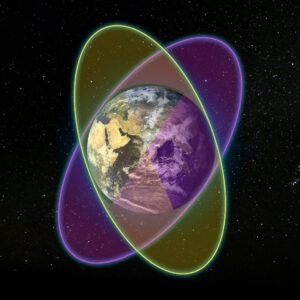Um eine globale Abdeckung zu erreichen, bestehen GNSS-Systeme aus einem...
WeiterlesenWhen we think of GPS, we often imagine the convenience of our smartphones guiding us through city streets or planning our next road trip. However, GPS technology as we know it has one significant limitation: it doesn’t work underwater. This limitation arises because GPS signals, which are radio waves, cannot penetrate water effectively. This challenge has spurred the development of special technologies that rely on acoustic signals to provide location information. In this article, we will look at an overview of these methods.
Why conventional GPS fails underwater
GPS (Global Positioning System) relies on signals sent by satellites orbiting the Earth. These signals travel through the atmosphere and are received by GPS receivers, which calculate their position based on the time it takes the signals to reach them. However, water significantly attenuates and scatters these radio signals, making them useless for underwater navigation.
A detailed description of how the GPS position is determined is explained in our article How GPS Works: How Your Device Knows Where You Are
This is where acoustic signals come into play
Unlike radio waves, acoustic (sound) waves can move efficiently through water. Underwater GPS technologies use this property to enable navigation and tracking underwater. This works as follows:
1.
Acoustic transponders
These are the beacons of the underwater world. Acoustic transponders are positioned at known locations underwater. From there they send out sound pulses at regular intervals. These sound waves move through the water and can then be picked up by underwater receivers.
2.
Underwater receiver
These receivers are carried by underwater vehicles or attached to objects such as buoys and detect the acoustic signals from transponders. By measuring the time it takes for the sound pulses to travel from the transponders to the receivers, they can calculate their distance from each transponder.
3.
Time-of-Flight
Similar to how GPS calculates position based on the travel time of radio signals from satellites, underwater GPS systems calculate position based on the travel time of acoustic signals. This process, known as time-of-flight calculation, is crucial for determining the range or distance between the receiver and the transponder.
4.
Multilateration
To determine exact location, underwater GPS systems often use a technique called multilateration. By receiving signals from multiple transponders and measuring the distance to each transponder, the system can triangulate the exact position of the receiver in three-dimensional space.
5.
Integration with inertial navigation systems (INS)
For greater accuracy, underwater GPS can be integrated with inertial navigation systems (INS). INS provide continuous position updates based on acceleration and rotation measurements, complementing the position data from acoustic signals.
Learn more about how to determine the GPS signal faster and more accurately in our article: AGPS – A technology to improve GPS performance
Applications of underwater GPS technologies
The ability to navigate and track objects underwater has opened up numerous applications in various fields:
1.
Marine research
Scientists use underwater GPS to study marine life, map the seafloor, and monitor underwater ecosystems.
2.
Underwater exploration
The technologies enable the exploration and mapping of shipwrecks, underwater caves and other underwater sites.
3.
Offshore industry
Underwater GPS is critical for oil and gas production operations, subsea construction, and subsea infrastructure maintenance.
4.
Navigation of underwater vehicles
Remotely operated vehicles (ROVs) and autonomous underwater vehicles (AUVs) rely on underwater GPS for precise navigation during missions.
5.
Environmental monitoring
These technologies make it easier to track pollution, monitor underwater habitats, and study the impacts of climate change on the oceans.
6.
Underwater archaeology
Discovering and documenting historical artifacts and sites beneath the waves is made easier with accurate underwater positioning.
Learn more about how the GPS signal is affected in our article The exact position: What factors influence the GPS signal?
Conclusion
As technology advances, systems are becoming more sophisticated, offering greater accuracy and reliability. Innovations in acoustic signal processing, integration with other navigation systems, and device miniaturization promise to improve capabilities and applications even further.
In summary, while traditional underwater GPS has its limitations, the development of acoustic technologies has revolutionized the way we navigate and explore the depths. These systems play a crucial role in various underwater activities and contribute to our understanding and use of the underwater world. Whether for scientific research, industrial applications, or exploration, underwater GPS is making a difference in the way we interact with the hidden parts of our planet.
Title image: Frans Daniels / unsplash
Are you ready to explore GPS tracking solutions for your business or personal use?
Contact us today to discuss the perfect device for your needs!
Or check out our online store.
Weitere Blog-Artikel
Die Funktionsweise von GPS: Wie Ihr Gerät weiß, wo Sie sich befinden
Haben Sie sich jemals gefragt, wie Ihr GPS-Tracker, Smartphone oder...
WeiterlesenA-GPS – Eine Technologie zur Verbesserung der GPS-Leistung
Assisted GPS (AGPS), eine Technologie, die eine schnellere Ortung, verbesserte...
Weiterlesen



